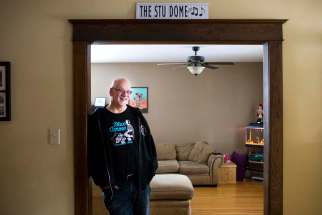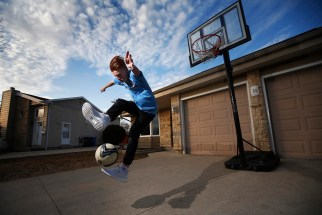No escape from reality Isolated arts-industry creators share must-have pandemic pick-me-ups
Read this article for free:
or
Already have an account? Log in here »
To continue reading, please subscribe:
Monthly Digital Subscription
$0 for the first 4 weeks*
- Enjoy unlimited reading on winnipegfreepress.com
- Read the E-Edition, our digital replica newspaper
- Access News Break, our award-winning app
- Play interactive puzzles
*No charge for 4 weeks then price increases to the regular rate of $19.00 plus GST every four weeks. Offer available to new and qualified returning subscribers only. Cancel any time.
Monthly Digital Subscription
$4.75/week*
- Enjoy unlimited reading on winnipegfreepress.com
- Read the E-Edition, our digital replica newspaper
- Access News Break, our award-winning app
- Play interactive puzzles
*Billed as $19 plus GST every four weeks. Cancel any time.
To continue reading, please subscribe:
Add Free Press access to your Brandon Sun subscription for only an additional
$1 for the first 4 weeks*
*Your next subscription payment will increase by $1.00 and you will be charged $16.99 plus GST for four weeks. After four weeks, your payment will increase to $23.99 plus GST every four weeks.
Read unlimited articles for free today:
or
Already have an account? Log in here »
Hey there, time traveller!
This article was published 24/04/2020 (2061 days ago), so information in it may no longer be current.
When you think about the necessities for surviving a pandemic, your mind might go to toilet paper, hand soap and sanitizing wipes. Maybe beans and flour.
But what about the things that nourish your soul? The small pleasures that help you get through each isolated day?
The Free Press arts team spoke to a musician, an author, a costume designer, a theatre artistic director and a visual artist about the five things they can’t survive without during the pandemic, kicking off what will be a regular series.
Rusty Matyas

At the end of January, Rusty Matyas made a post on Facebook, looking for someone in Winnipeg who was familiar with correct Klingon pronunciation.
As it turns out, the Winnipeg producer/musician was working away on a wildly ambitious (and delightfully nerdy) project: a cover of Queen’s Bohemian Rhapsody, but done entirely in the language spoken in the Star Trek universe.
“Queen and Star Trek are arguably some of the best in their respective worlds, and I wanted to hear what they sounded like in one world,” Matyas explains. “They are also solid beacons of hope, in the arenas of peace and love and equality.
“More bluntly, I have a Klingon dictionary and wanted to use it for something challenging.”
Matyas, along with a colourful crew of local players, had originally wanted to shoot a recreation of the original Bohemian Rhapsody video — “in full costume and forehead prosthetics”— at the Park Theatre at the end of April, but COVID-19 altered those plans.
“Once the pandemic forced us into isolation, everyone sent in home videos in very creative ways, and we edited that into the final product,” Matyas says. “We also finished tracking the violins, theremin, harp, and did the mixing all in isolation.”
Although the finished project deviated from his original vision, Matyas is thrilled with how it turned out. The video is available on YouTube now.
“I can’t express enough, just how much it meant to me for everyone to put so much time into something so silly,” he says. “The video will forever represent a time when we were all figuring out what the heck was going on.”
Here are five things getting Matyas through this time — and none of them involves Star Trek.
1. Pro Tools/recording setup
“My regular job as a music producer usually has me in our big awesome studio at Paintbox Recording. We’ve been adapting, though, and I’m right in the middle of renovating my basement into a personal studio. I have a pretty overactive imagination, and music has always been an awesome creative outlet for me to sink my brain into. I can’t wait to get back to recording.”
2. NPR’s Up First podcast
“As far as giant media outlets go, I tend to feel like NPR is attempting to pull very little wool over my eyes. Is it the CBC of ‘Merica? I dunno, but I think so, so it definitely is. Up First is an easy-to-digest breakdown of yesterday’s news insanity in 15 minutes.”
3. Lying by Sam Harris
“This book was recommended to me by a local musician during a recent recording session, and I’m glad it was. It’s a short read about simplifying your life, and easing your anxieties just by telling the truth more often. We’re all bad at lying, too, and he gets into the nitty gritty of white lies, etc. I’m sure all my friends will tell me ‘You did the most amazing interview anyone’s ever read’ when they see this — even if they don’t think as much.”
4. Fish tank
“For the holidays, my wife Savanna and I treated ourselves to a fish tank. It’s grown quickly into a hobby that brings a whole new element of colour and wonder into our home. We’ve since upgraded to a larger, sexier, curvy-front tank, and we have a really fun collection of cichlids and parrot fish. I find myself staring into it for an entire hour sometimes. Their whole life is in there. They develop a range of personalities and meaningful bonds. It’s amazing.”
5. Facebook
“With a little bit of curating, my newsfeed has actually become a place I can reliably go for a warm connection to friends and family. I’ve chosen to only see certain community posts, posts from people I love, bands I love, etc. Essentially, I’ve made it a reliably positive space for my brain to go for a few minutes at a time. I try to keep the political chatter to a minimum, and to find and share at least one laugh a day.”
— Jen Zoratti
Diana Thorneycroft
When health officials told Canadians to stay at home to prevent the spread of COVID-19, many people feared boredom.

Diana Thorneycroft, 64, saw opportunity. The Winnipeg artist, known for pushing-the-envelope photographic and mixed-media exhibitions that have been shown across North America, thought she could spend all that extra time at home putting pencil to paper.
Drawing is nothing new for Thorneycroft. One of her many notorious shows, There Must Be 50 Ways to Kill Your Lover, is a 2005 series of drawings that match delicate pencil sketches of famous cartoon characters with disturbing scenes of those characters killing spouses and friends. This isn’t cartoon violence — there are no anvils.
She found, however, that the quarantine and the creative process weren’t a perfect match at first. Once she was able to ease off on television’s coverage of the pandemic, though, her concentration, and artistry returned.
Here are five things Thorneycroft says are critical to her artistic process, and her life.
1. Michael Boss, Thorneycroft’s partner for 26 years
They first met in 1994 at an artist’s retreat in Riding Mountain National Park, where awkward living arrangements in a cabin — three women, one man and two bathrooms — meant a decision had to be made.
“We couldn’t have three women use one washroom and one man use the other,” Thorneycroft says, recalling the injustice. “I said, ‘I’ll share one with you.’ “
Naturally, they hit it off, and have been together ever since.
“One of his many gifts is his ability to diffuse a potential argument by using humour,” Thorneycroft says. “It’s kinda hard to stay pissed off when you’re laughing. He’s also incredibly romantic. He makes staying in love easy.”
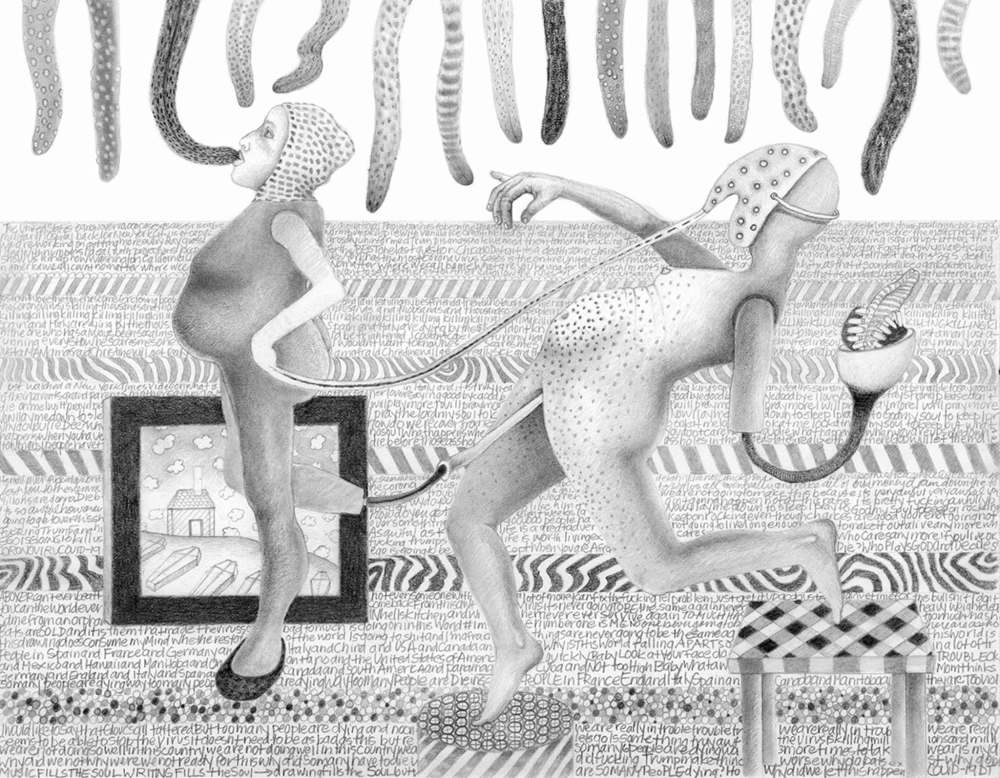
2. Drawing as a form of meditation
Once she was able cut down the constant din of positive coronavirus cases, PPE shortages and testing availability, she found drawings were no longer left half-complete on the coffee table. Her subconscious was freed and she was able to fend off any anxieties. The transformation has been magical.
“Once my creative juices started flowing, it felt great. I was being productive, quite the opposite of many who were feeling stuck at home,” she says. “There were no distractions, no meetings, no lunch dates. Nothing was urgent anymore and suddenly this amazing free space opened up.”
The result? Enough works for another exhibition, which she says is in the works.
3. The mute button on the remote
“Being stuck at home has encouraged more TV viewing but the commercials, especially the ones from car manufacturers and big banks that are ‘there for us,’ make me crazy!”
4. Anti-depressants
“In my mid-30s I became seriously depressed. After a couple of years of going on and off anti-depressants, it became evident that staying on them, even at a low dosage, would be beneficial to my health. During this very challenging time, I am still able to get out of bed every day and be thankful for all that I have,” she says.
5. Omand’s Creek
Thorneycroft and Boss’s round-trip stroll from home to Omand’s Creek, along car-free Wolseley Avenue, takes about 45 minutes.
“We all know how crucial exercise is, but this daily stroll has shown Michael and me the rich diversity of people in our community and the mindfulness of others as we all bob and weave six feet away past each other.”
— Alan Small
Ari Weinberg
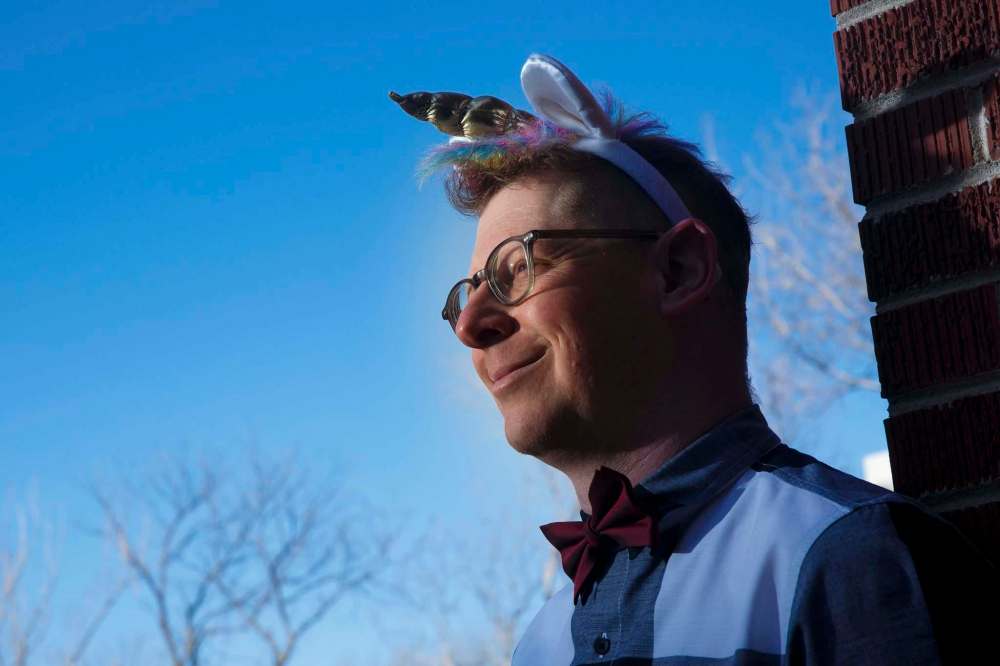
When Ari Weinberg, 35, moved to Winnipeg to begin his job as artistic director of Winnipeg Jewish Theatre, a position he assumed almost five years ago, he made a big impression on the local theatre scene through videos of himself dancing in a tutu that he would post daily on social media.
Despite a disappointing ending to the WJT season, with the cancellation of Daniel Thau-Eleff’s play Narrow Bridge (which has since been rescheduled to the 2020/2021 season), Weinberg’s contagious, joyful spirit is still shining through on a daily basis via social media thanks to these five things that are keeping him sane in times of social distancing.
1. Family and friends
“I live alone, in a pet-free building (if I could adopt a dog I would, but I can’t). I also don’t have any family here; they’re all in Ontario. Every day is filled with some form of connection with loved ones on FaceTime, Skype, or regular phone calls (so I can pace my apartment and get steps on my Fitbit). Also, distanced walks with my chosen family in Winnipeg — even from six feet away, being in the presence of another person brightens up my day.”
2. Board games
“A large part of my chosen family in Winnipeg is the Monday Society, a group of 10 friends who meet up every Monday night and play board games. Since we can’t meet in person right now, we’ve been meeting on Facebook Messenger Video and playing Jackbox games or various games on Board Game Arena. 7 Wonders is my fave. Monday nights have been — and continue to be — a highlight of my week. We play games, we laugh, and we don’t talk about COVID-19; it’s a nice break from the world.”
3. Dancing and his unicorn horn

“I love unicorns. They are magical creatures and we could all use a little magic right now. I often do daily dance videos on my Instagram account (@ariw888) and sometimes I wear this unicorn horn I got for Halloween when I first moved to Winnipeg. But almost every day right now I have a 15 to 30-minute private dance party in my apartment and I usually wear my unicorn to put a little magic in my day while shaking it out to Kylie Minogue, Donna Summer, Beyoncé, Cher, ABBA and a whole other slew of way-back playbacks.”
4. The arts
“I have some incredible art by local artists in my apartment: Leslie Franklin, Anthony Steffes, Zephyra Vun, Jordan Miller and Reymond Page. Staring at their work every day nourishes my soul. I also still need my theatre fix, so I’m grateful for the all the live recordings of theatres available from the National Theatre, the Stratford Festival, BroadwayHD, and other sources right now. Most Saturday nights since we started isolating, my friend Kate, who lives in Toronto, and I do a theatre double bill. We pick two shows to watch back to back online and text each other our responses as we watch… it doesn’t beat seeing a show live, but it fills the void for now.”
5. Food
“I was never really much of a cook before this; I mostly ate out. Three weeks ago I signed up for Hello Fresh and I have fallen in love with cooking a few nights a week. I find it pretty relaxing… but maybe it’s because I listen to Chet Baker while I’m cooking? Regardless, this is the one practice from isolation I hope to maintain moving forward.”
— Frances Koncan
Jenny Heijun Wills
Jenny Heijun Wills, 38, moved to Winnipeg from Montreal in 2011 when she was hired in the department of English at the University of Winnipeg. Last year, her book, Older Sister. Not Necessarily Related: A Memoir was published by McClelland & Stewart (Penguin Random House Canada); the book won the Hilary Weston Writers’ Trust Award for non-fiction and was recently named a finalist for three Manitoba Book Awards. Older Sister was featured on many year-end lists, and was chosen as one of the Winnipeg Free Press’s 10 most important books by a Manitoba author of the last decade.

Like her U of W colleagues, Wills quickly reorganized the last few weeks of winter courses to accommodate the new and shifting needs of students. For one class, this meant taking end-of-term creative writing workshopping online. She’s currently preparing for spring courses, which begin the first week of May.
The pandemic also meant Wills’ spring literary festivals and reading events were cancelled or postponed. At least one, the Festival of Literary Diversity (FOLD), has moved its panels online. Anyone interested in attending these online panels can register free (with festival events continuing until May 3) at thefoldcanada.org.
Wills has been staying home with her family since the U of W’s closure. Having just moved in late November, she and her partner have been working on house renovations, including the installation of a large home library. “We still have a large quantity of face masks,” she notes. “Last year, while I was in Toronto for meetings, my very kind agent accompanied me through Chinatown to stock up. This was pre-pandemic. We just always have them around in case someone gets a cold.”
In contrast to the political, emotionally intense nature of Wills’ memoir — she was adopted from Korea as a baby, and Older Sister is about reuniting with her first family in Seoul — when she’s not working she tries to focus pleasure in her daily life, even while socially isolating. Five things Wills has been leaning on during the pandemic are:
1. Books
“It should come as no surprise that as a writer and literary studies professor, I depend on books to find beauty and joy in the world. I had a writing assignment that began after the start of the pandemic and that I just submitted last week. I need to read poetry and fiction in order to write. In the last month, I turned to BIPoC (Black, Indigenous, Person of Colour) writers such as Gwen Benaway, Canisia Lubrin, Ocean Vuong and Toni Morrison for inspiration. They never disappoint and they remind me how to be political and esthetic at once.
“And in the course of building the home library I’d always dreamed, my partner and I at last merged our books — which number in the thousands. We’ve been together over a decade and finally, maybe because of the circumstances created by the pandemic, we combined our collections. We laugh that this is the ultimate gesture of commitment.”
2. Makeup
“I’m esthetically minded, but when I first started staying home, I stopped getting ready for the day like I typically would have.
“At some point I saw that poets Terese Mason Pierre and Domenica Martinello were doing ‘book looks’ (makeup looks inspired by book covers) and joined in the fun. Every day I post a book look on Twitter and Instagram inspired by a BIPoC-authored text. In May (which is Asian Heritage Month) I’ll do two looks per day — regular BIPoC content, plus a bonus look celebrating an Asian author. Other people doing book looks include Jaye Simpson, Alicia Elliott, and Nisha Patel. They are amazing!”
“I think it is important encourage pleasure, creativity and self-care, and this is one way I’m doing that. And anything that centres BIPoC writers and talent is meaningful to me.”
3. Stand mixer
“More time at home = more baking = more treats. So, win.”
4. Social media
“I love having video chats with dear friends and family in Ontario, Quebec, and B.C. And I appreciate seeing what everyone is thinking and feeling on Instagram. I feel I have more time to be part of this community these days. And I’m reading more blogs and articles and appreciating social media even more than usual.
“Also, a lot of writers are taking their book launches and reading events online. Some are doing Instagram Live shows, others doing similar events on Twitter or Facebook. It is heartbreaking to work so long on a project and then to have events cancelled — worried that when the pandemic is over, audiences will have already moved on to new releases. These online events keep the spirit up for authors and readers. And many are in collaboration with independent bookstores and publishers, which is cool.”
5. Flowers
We have flowers at home at all times from spring to fall. They’re a small luxury; since it has been so cold here still and so we’ve not been able to even go on the patio or into the yard, it is nice to have live plants and flowers inside. It was my partner’s birthday a few weeks ago and gifts included large planter boxes for indoor succulents.”
— Ben Sigurdson
Heather Neale
Winnipegger Heather Neale has been in costumes for the past 18 years.
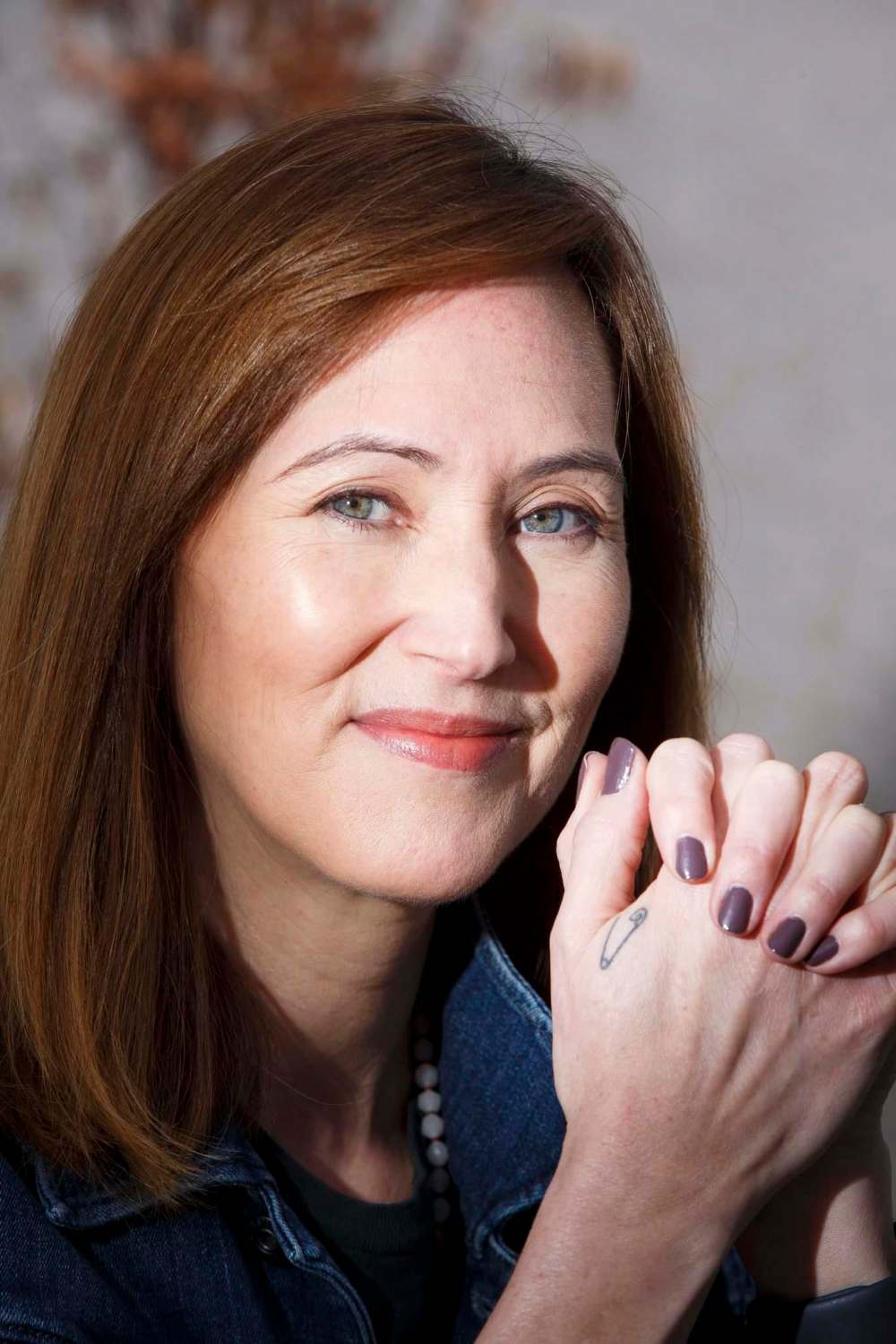
That is to say, Neale, 50, has worked in the costume department on local film and television since 2002, first as an apprentice, later as a “truck costumer” (”They basically make sure the actors are wearing the correct costume at the correct time”), then as an assistant, and lately as a designer on high-profile work such as the Liam Neeson film The Ice Road, and several seasons of the SyFy series Channel Zero.
She was doing prep for the upcoming Netflix series Sentient when the pandemic shut down production for the immediate future.
Hence, her list of five essential things differs between pre-pandemic and post-pandemic, except perhaps her actor husband Brent, whom she values even more than before.
“I really can’t do without my husband,” she says. “He’s the brave one that goes to the grocery store, ventures out while I anxiously sit in my house disinfecting things. His humour and ability to keep me entertained and sane is pretty special.”
Pre-pandemic, she would list things like wine, popcorn, and a weekly order of takeout from Lamar Donair & Burgers. (”The Falafel Platter and tabouli salad are insanely delicious!”)
“Knowing the pandemic was coming, I managed to get most of my sewing supplies from the production office before we closed up so I could make masks and keep myself occupied with simple sewing projects,” she says. “But it’s the things forgotten that I realize I can’t live without — like”:
1. Safety pins
“Any costume professional has hundreds of safety pins lying around and we use them constantly! I use them to hold things together, obviously, but also to open packages and hold keys. The list is endless, but for me, I somehow can’t live without them.
“My one and only tattoo is a safety pin on my right hand, so maybe I just have a weird affinity for them,” she says. “Or I just miss them because it reminds me of the job I love doing.
“If I’m lost, you could probably find me by the trail of these I leave behind.”
2. Daily contact with her daughter
Audrey Neale, 28, has lived and worked in Sydney, Australia, as a marketing manager since 2016. They stay in touch via text, Instagram, Snapchat or Twitter.
“We have always had regular contact but now we are in touch more than ever,” Heather says. “We keep each other calm.”
3. Exercise videos on YouTube
“Every day, I spend 45 minutes blasting music and exercising in my basement. Non-pandemic times, I would rarely exercise. Working long hours in film, I just never had the time or energy for it.”
4. Netflix Party
“Being able to watch and comment on movies simultaneously with friends and family far away is fun,” she says. “This was a new discovery for me, and I’m hooked.”
5. Hope
“Right now, I’m hoping everyone will make the right choices and stay safe,” she says of this intangibile necessity. “I hope we will get through this time and I hope I can get back to designing my Netflix series because the scripts are amazing and hopefully the costumes will be too.”
— Randall King

In a way, Randall King was born into the entertainment beat.

Frances Koncan (she/her) is a writer, theatre director, and failed musician of mixed Anishinaabe and Slovene descent. Originally from Couchiching First Nation, she is now based in Treaty 1 Territory right here in Winnipeg, Manitoba.


Alan Small has been a journalist at the Free Press for more than 22 years in a variety of roles, the latest being a reporter in the Arts and Life section.

Jen Zoratti is a Winnipeg Free Press columnist and author of the newsletter, NEXT, a weekly look towards a post-pandemic future.
Our newsroom depends on a growing audience of readers to power our journalism. If you are not a paid reader, please consider becoming a subscriber.
Our newsroom depends on its audience of readers to power our journalism. Thank you for your support.







